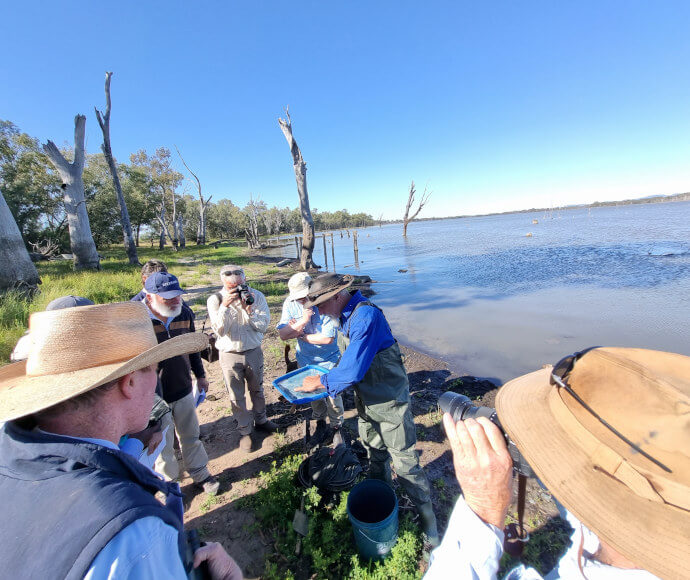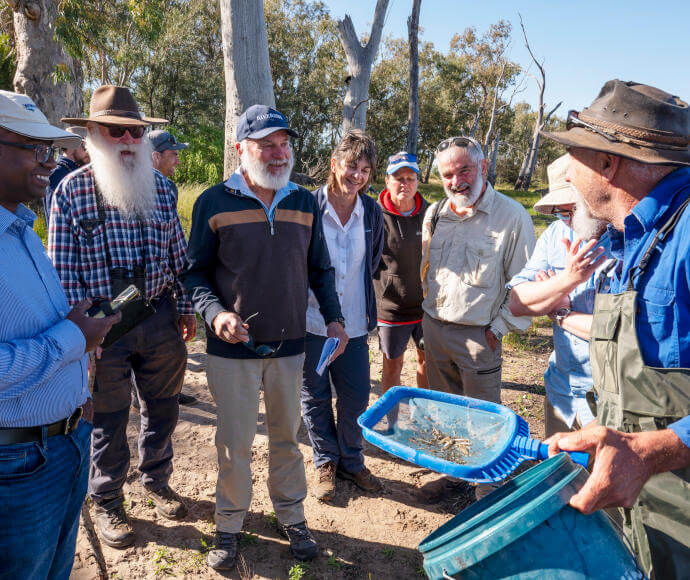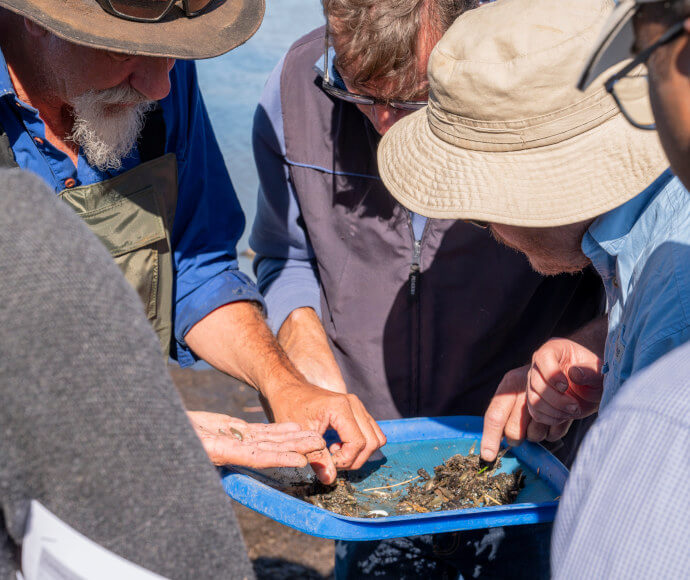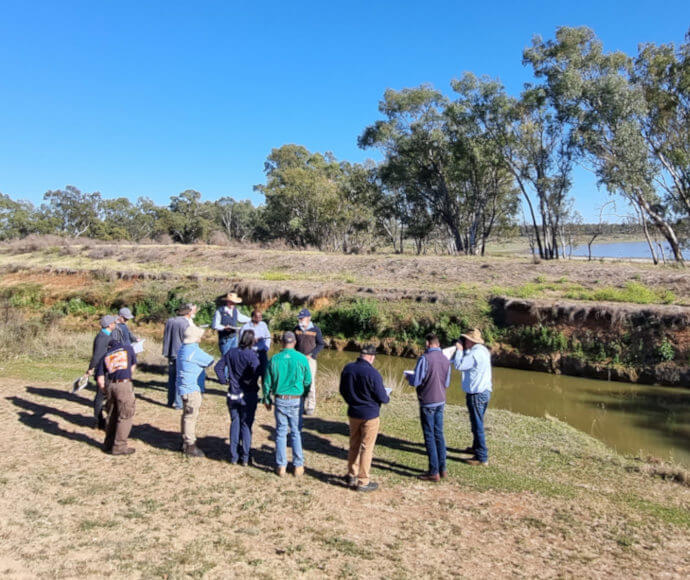On 17 October 2023, the Lachlan Environmental Water Advisory Group (EWAG) met at Lake Cargelligo to consider future environmental watering actions for the 2023–24 water year.
Lake Brewster watering action
Lake Brewster is one of the largest and most significant pelican rookeries in New South Wales and Australia. In 2023–24, Lake Brewster is shaping up to be the only inland pelican rookery, because other significant northern inland rookery sites are drying. On 28 September 2023, an inspection indicated a rapid and extensive expansion of the pelican rookery located in the northern high ground of Lake Brewster. With long-term management of the rookery now a priority, the EWAG was consulted on the draft Lake Brewster Watering Proposal. The EWAG supported the use of environmental water to manage Lake Brewster primarily for pelican requirements. The Department of Climate Change, Energy, the Environment and Water's Water for the Environment program and partner agencies will continue to monitor the rookery as it develops and review the watering proposal in further consultation with the EWAG.
Lachlan Regional Water Strategy
The Lachlan Regional Water Strategy has been drafted by the department's Water group. The strategy sets out the key challenges for the region and provides a shortlist of proposed actions that could help manage water needs in the Lachlan region during the next 20 years. No decisions have been made on the shortlisted actions.
The Lachlan environmental water management team sought EWAG feedback on the strategic direction and implementation priorities for the next 3 to 5 years.
The EWAG was asked to focus on the ‘have your say’ feedback points and provide advice on which actions they believe will significantly build resilience to climate extremes and improve catchment health objectives.
Following public consultation, the department will begin drafting an implementation plan that identifies key partners and timeframes for each action progressed.
Supporting southern bell frogs in the Great Cumbung Swamp
The long-term viability of the endangered southern bell frog in New South Wales relies on the appropriate management of wetland networks. The frog’s distinctive call was heard in the Great Cumbung Swamp over 2 years ago, drawing attention to its presence in the Lachlan catchment. Monitoring has found good numbers and evidence of breeding across several wetlands in the Cumbung. EWAG members recommended pursuing options to support southern bell frog viability in the Great Cumbung Swamp, focusing on sites where a Lachlan metapopulation could be retained under a range of water availabilities. EWAG members were asked to share local knowledge of previous drought conditions and any permanent water to identify potential drought refugia, as action taken now can be critical in preparing for future drought conditions.
Maintaining olive perchlet habitat in the Lachlan
A new population of the rare and endangered western population of the native small-bodied fish, the olive perchlet, was recently discovered in the Lachlan catchment near Booligal. The EWAG considered 2 environmental water delivery options to maintain water levels in the lake where the fish occur. This will address the immediate issue of preventing the lake from drying out this summer–autumn.
The private landholder, EWAG and associated partner agencies are also working on a longer-term strategy for detecting additional populations in the region. This will include using the eDNA genetic testing method and fish translocation. The translocation option will move fish that are currently in wetlands that will dry out, into permanent refuge habitats.



